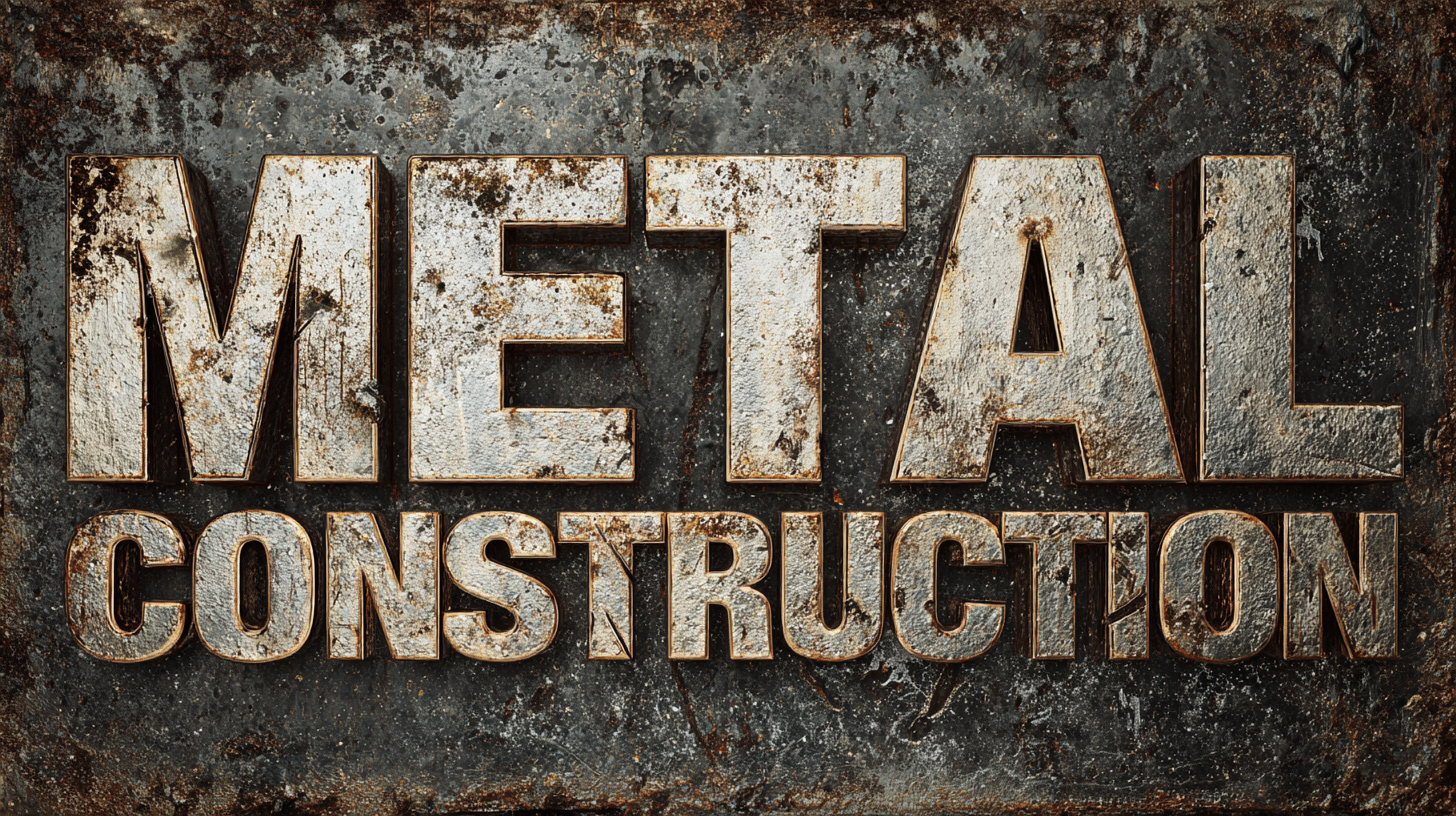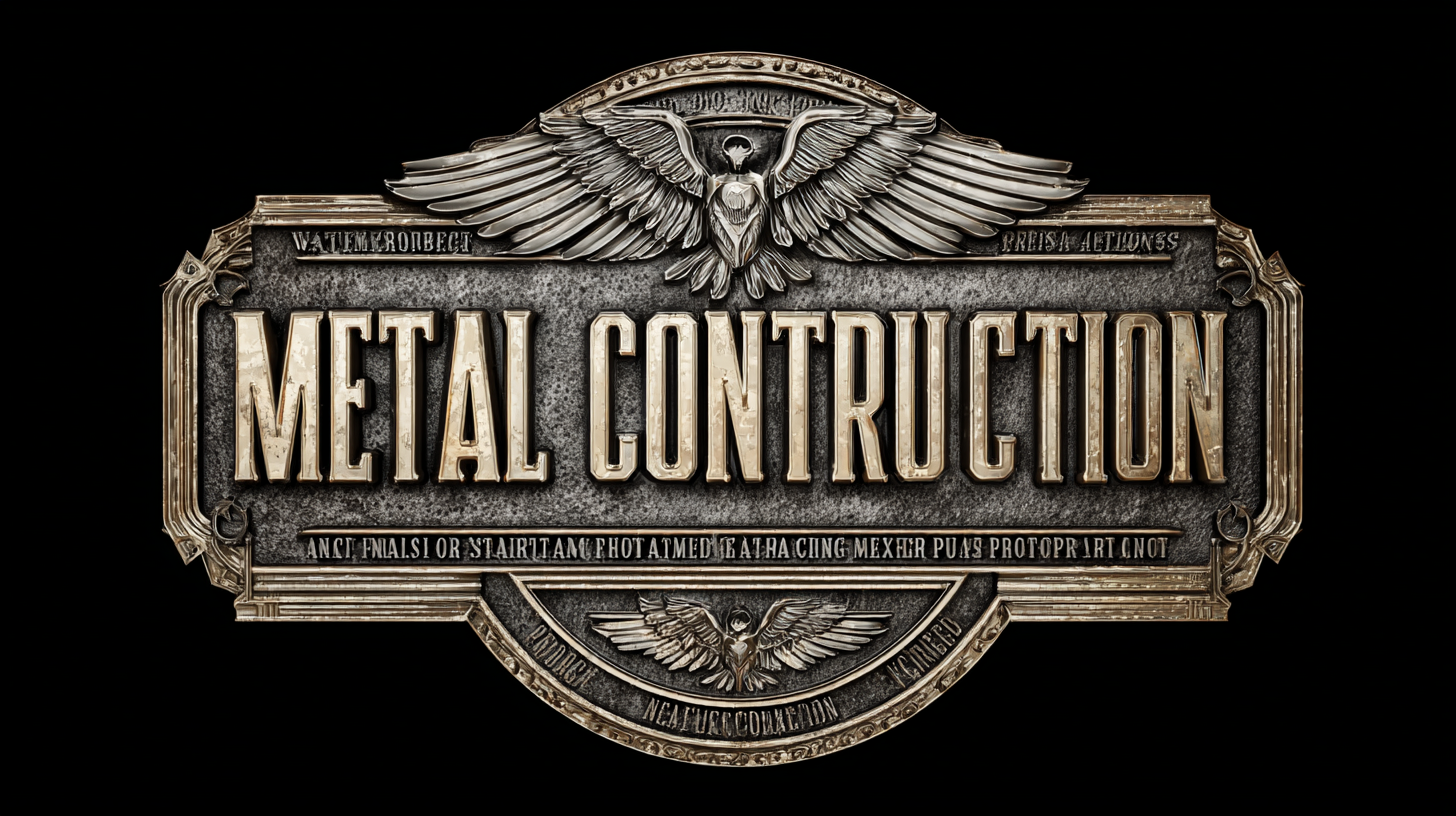
In today’s rapidly evolving construction landscape, the significance of Metal Construction continues to rise, with industry reports indicating that the global metal construction market is projected to reach $41.5 billion by 2027, growing at a CAGR of 5.8%. This surge can be attributed to metal’s superior durability, sustainability, and versatility, making it an ideal choice for a variety of projects, from commercial buildings to residential homes.
 Moreover, the functionality and aesthetic appeal of metal materials allow for innovative design possibilities that can meet the demands of modern architecture. As project managers and construction professionals navigate these trends, mastering the art of metal construction becomes essential for delivering successful results that align with contemporary building standards and client expectations. This ultimate guide aims to equip you with the knowledge and strategies necessary to effectively leverage metal construction for your next project, ensuring maximum efficiency and quality.
Moreover, the functionality and aesthetic appeal of metal materials allow for innovative design possibilities that can meet the demands of modern architecture. As project managers and construction professionals navigate these trends, mastering the art of metal construction becomes essential for delivering successful results that align with contemporary building standards and client expectations. This ultimate guide aims to equip you with the knowledge and strategies necessary to effectively leverage metal construction for your next project, ensuring maximum efficiency and quality.
In the realm of quality metal construction techniques, mastering the fundamentals is pivotal for the success of any project. The integrity of a structure largely depends on the materials used, and recent advancements in lightweight alloys and high-strength steels have significantly influenced the automotive sector. A systematic review of these advanced materials demonstrates their potential, indicating that lightweight construction can lead to improved fuel efficiency and reduced emissions—a critical concern in today’s manufacturing landscape.

Furthermore, innovative additive manufacturing technologies, such as wire and arc additive manufacturing, are reshaping how we approach metal construction. These methods enable enhanced control over the quality and accuracy of manufactured parts by managing factors like heat input and shrinkage. A recent study highlights the importance of maintaining these variables to prevent structural defects, underscoring that successful implementation of such techniques requires a deep understanding of metal properties and behavior under various conditions.
As industries continue to seek out and incorporate cutting-edge construction techniques, the mastery of these fundamental principles will prove essential in meeting both performance and sustainability goals.
When it comes to metal construction projects, selecting the right manufacturer can significantly impact the quality and efficiency of your work. Chinese manufacturers are increasingly recognized for their ability to deliver high-quality metal products at competitive prices. One of the main advantages is their extensive experience and advanced technology. Many Chinese companies have invested heavily in state-of-the-art machinery and skilled labor, enabling them to produce precision components that meet stringent international standards.
Additionally, the supply chain ecosystem in China is robust, allowing for rapid turnaround times and flexibility to accommodate various project sizes. This capability is particularly beneficial for businesses that require quick delivery without sacrificing quality. Furthermore, engaging with Chinese manufacturers often results in cost savings due to lower production costs, enabling you to allocate more resources to other critical aspects of your project. Embracing partnerships with these manufacturers not only ensures access to cutting-edge technology but also fosters a more efficient and cost-effective approach to metal construction.

When choosing materials for metal construction, it's crucial to evaluate options beyond traditional steel and aluminum. Recent life cycle assessments (LCAs) indicate that while aluminum is lighter and resistant to corrosion, the environmental impacts associated with its production can be substantial, especially in terms of embodied carbon. This factor is increasingly pivotal for industries focused on sustainability as they seek to decarbonize their operations. Considering alternative materials such as advanced composites or newly developed two-dimensional materials could provide innovative solutions that minimize environmental footprints.
Additionally, as the construction industry continues to prioritize sustainable practices, exploring the potential of low-impact materials can lead to better overall project outcomes. For instance, utilizing materials with a lower global warming potential not only helps in compliance with stringent regulations but also caters to a growing market demand for eco-friendly construction. Therefore, a well-rounded evaluation of material options should consider performance, longevity, and environmental effects, guiding you toward the most responsible choices for your next project.
Sustainable practices in metal fabrication and construction are becoming increasingly essential as the industry acknowledges its role in contributing to environmental concerns. According to a report by the World Steel Association, the steel industry emits approximately 7-9% of global carbon dioxide emissions. However, the adoption of sustainable practices can significantly reduce this footprint. For example, the use of recycled materials in metal construction can lower emissions by up to 75%, demonstrating that integrating recycling into production processes is both an eco-friendly and economically viable strategy.
Additionally, energy-efficient technologies are transforming metal fabrication processes. The U.S. Department of Energy estimates that improving energy efficiency in metal fabrication could save the industry billions annually while reducing greenhouse gas emissions. Implementing practices such as advanced manufacturing technologies and optimizing resource usage can lead to a more sustainable approach. As these methods gain traction, projects not only benefit from reduced environmental impact but also enhanced market competitiveness in an increasingly eco-conscious world.
| Material Type | Recyclability (%) | Lifecycle Energy Use (MJ/kg) | Common Applications | Sustainable Practices |
|---|---|---|---|---|
| Aluminum | 100 | 156 | Construction, Transportation | Recycling and reuse, Low-energy production |
| Steel | 85 | 27 | Buildings, Infrastructure | Responsible sourcing, Recycling scrap |
| Copper | 90 | 120 | Electrical wiring, Plumbing | Use of recycled materials, Energy-efficient processing |
| Zinc | 100 | 16 | Coating for steel, Roofing | Sustainable mining practices, Recycled content use |
| Stainless Steel | 60 | 85 | Kitchen equipment, Medical applications | Low-impact production, Long lifespan usage |
Navigating the complexities of international metal sourcing is becoming increasingly crucial for projects in various sectors, including construction and manufacturing. Recent reports highlight the significant challenges faced by industries, particularly in aviation, where supply chain disruptions have led to a critical shortage of aircraft. These issues are a reflection of broader systemic problems that could potentially impact metal sourcing. As construction projects rely heavily on a steady supply of metals, understanding the dynamics of international sourcing has never been more vital.
The ongoing global supply chain crisis echoes the reality that delayed delivery times and increased costs for raw materials are not just temporary setbacks. Buyers must be strategic about their sourcing decisions, perhaps considering alternative suppliers or materials to mitigate risks associated with over-reliance on specific regions or manufacturers. Additionally, fostering strong relationships with suppliers and staying attuned to market shifts can help navigate these tumultuous waters effectively. As industries adapt to these challenges, mastering the art of sourcing will play a pivotal role in the success of future projects.
This chart illustrates the challenges faced in international metal sourcing and delivery across various regions. The data shows the average lead times in weeks for sourcing metal materials from different parts of the world.